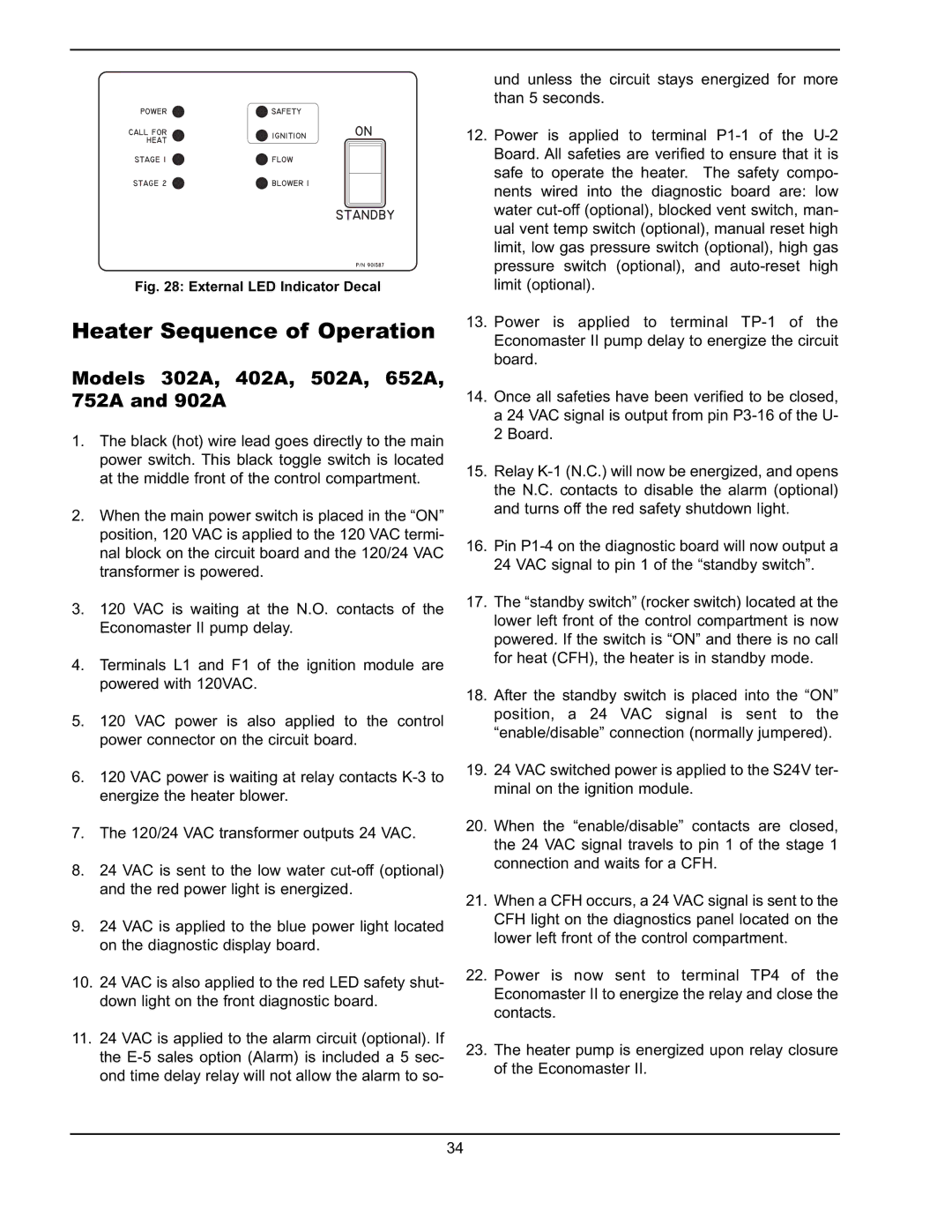302A-902A specifications
The Raypak 302A-902A is a highly regarded pool and spa heater, known for its efficiency and reliability in delivering warmth to residential and commercial aquatic applications. This heater stands out due to its robust design, advanced technology, and user-friendly features.One of the key characteristics of the Raypak 302A-902A is its dual fuel capability, which means it can run on either natural gas or propane. This flexibility allows users to choose their preferred fuel type, contributing to operational efficiency and cost-effectiveness. With a BTU output ranging from 302,000 to 902,000, the Raypak heater is capable of quickly heating large volumes of water, making it ideal for pools, spas, and hot tubs.
The heater incorporates advanced technology such as a stainless steel heat exchanger, which not only ensures excellent thermal conductivity but also promotes durability against corrosion. This is especially advantageous in harsh environments, where exposure to chemicals can significantly impact the lifespan of traditional copper heat exchangers. The Raypak 302A-902A's heat exchanger is designed to withstand the rigors of constant use while maintaining high performance levels.
Another prominent feature of the Raypak 302A-902A is its digital display control system, which simplifies the operation and monitoring of the heater. Users can easily set and adjust temperatures, as well as access diagnostic information, all through an intuitive interface. This digital control not only enhances user experience but also aids in the timely maintenance of the unit.
Energy efficiency is another major selling point of the Raypak 302A-902A. The heater is designed with environmentally friendly practices in mind, utilizing a low NOx burner that minimizes harmful emissions. This not only meets environmental regulations but also makes it a greener alternative for heating needs.
In terms of installation, the compact design of the Raypak 302A-902A allows for versatile placement options, whether in a residential backyard or a commercial environment. Its user-friendly installation process ensures that homeowners and businesses alike can enjoy the benefits of heated water with minimal hassle.
Overall, the Raypak 302A-902A is an exemplary choice for anyone seeking a high-quality, efficient, and flexible pool and spa heating solution. Its combination of robust engineering, advanced technology, and user-focused features solidifies its position as a leader in the market, promising effective heating for years to come. Whether for personal enjoyment or commercial use, this heater delivers exceptional performance that meets diverse heating needs.

